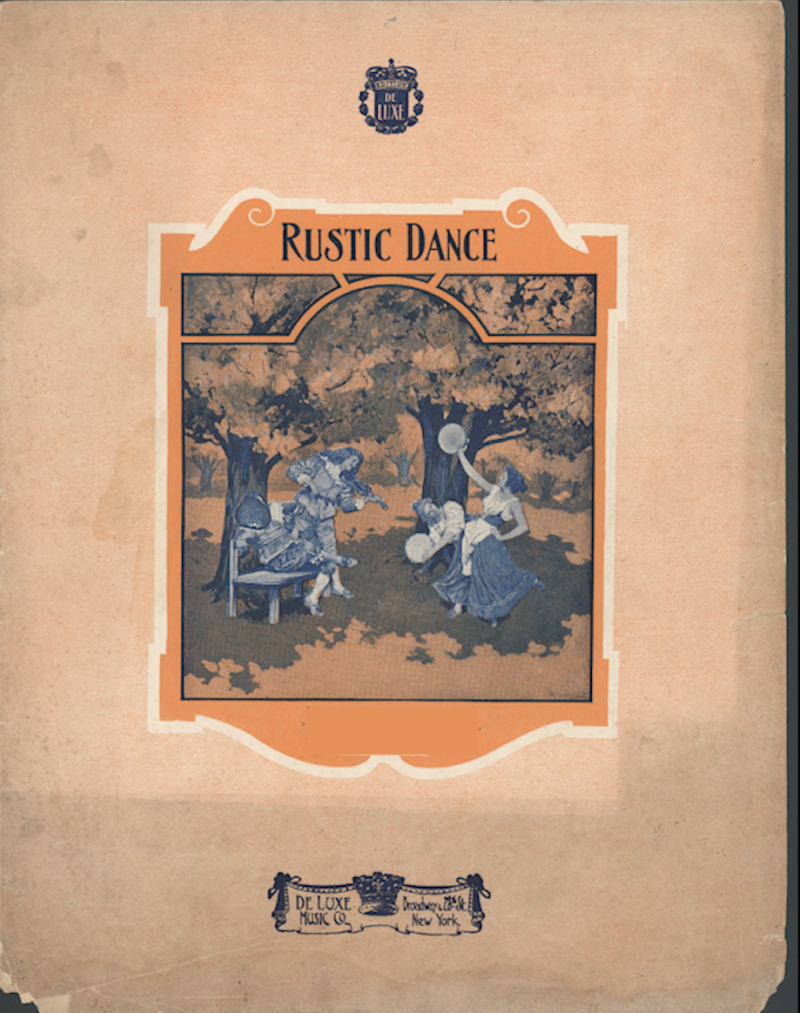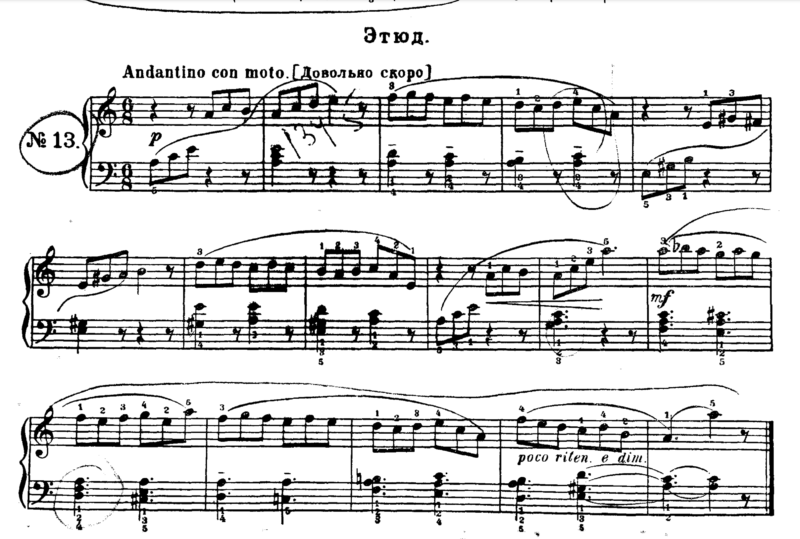Easier
A list

Beethoven ~ Écossaise in G (A1) The écossaise is a sturdy dance, but a "dance" it should be. A danger is to take the various wedge indications and 2nd quaver beat accentuations too literally. The effect then becomes hard and sometimes nasty. Try lengthening the staccato touch, where indicated as wedges. That will give a more emphatic quality without detracting from the dance feel.
Adam Carse ~ Rustic Dance (A5) (piano duet) needs to be played at a quick tempo but is not otherwise challenging, much of the primo part is written in unison between the hands.
Goedicke ~ Étude in A minor (A6) should be fairly easy to learn. As you can see, below, it is only 16 bars in length. Be sure to distinguish between the left hand crotchet/quaver rest and dotted crotchet note lengths.

Mozart ~ Bourlesq (A10) is a truly delightful piece and one that should be fun and easy to learn. The left hand is mainly a light staccato touch throughout with the right hand playing with some legato and some slurred phrasing.
Prószynński ~ Kowalczyki (A12) is a charming, easy piece that contains a varied range of articulation and dynamics.
Purcell ~ Air in D minor (A13) is a piece you may recall from previous syllabi. A simple and effective solution of what to do with the articulation can be heard in this extract, played by Dinara Klinton (ABRSM Grade 2 recordings), where the right hand is mainly legato with a consistently detached left hand bass line:
_____________________________
B list

Stanford ~ Lullaby (B2) is a relatively easy piece to get together. It's always helpful to remember not to take articulation marks too literally, for example by making the second dotted crotchet of each bar too short. A lyrical length is much better, as heard here:
_____________________________
Other content in “Grade 2”
-
Current: Easier
